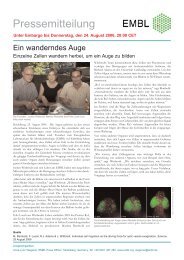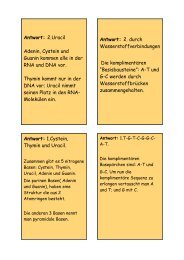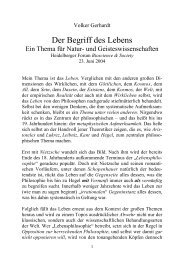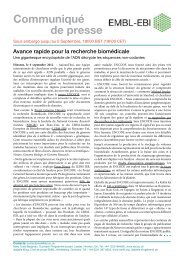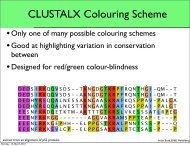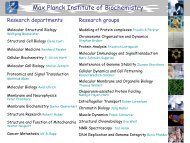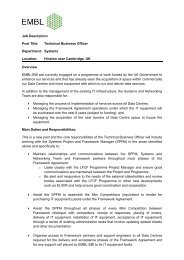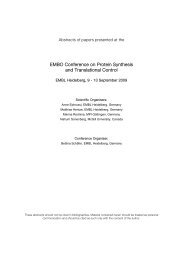Media Clips - EMBL
Media Clips - EMBL
Media Clips - EMBL
Create successful ePaper yourself
Turn your PDF publications into a flip-book with our unique Google optimized e-Paper software.
Scientific American: The 1 Percent Genome Solution<br />
June 13, 2007<br />
The 1 Percent Genome Solution<br />
Tiny slice of genome reveals bustling activity in the gaps between genes<br />
The first results from a massive project to exhaustively catalogue all<br />
the functions of the human genome reveal a hotbed of activity in the<br />
gaps between genes. An international consortium of researchers<br />
sifted through 1 percent of the genome looking for pieces of DNA that<br />
are copied by the cell or help to control gene activity. The results<br />
indicate that most DNA is copied into molecules of RNA, including the<br />
long stretches between genes, and that genes overlap and interact<br />
with each other much more than researchers previously believed.<br />
"We all suspected there was interesting stuff going on in these regions<br />
[between genes], and sure enough there is," says bioinformatician<br />
Ewan Birney of the European Bioinformatics Institute near Cambridge,<br />
England, a member of the project's computer analysis team.<br />
Although researchers do not yet know the biological significance of<br />
these discoveries, they say that fully cataloguing the genome may<br />
help them understand how genetic variations affect the risk of<br />
contracting diseases such as cancer as well as how humans grow<br />
from a single-celled embryo into an adult. The next phase of the<br />
project, set to begin later this year, will attempt to inventory the full<br />
genome.<br />
A genome consists of only four different nucleotide bases, or DNA<br />
subunits, arranged in a particular sequence. The publication of the<br />
human genome in 2001 revealed its sequence—the significance of<br />
which remains a mystery. In particular, genes account for only 1.2<br />
percent of the genome's three billion bases. Once dismissed as "junk<br />
DNA," researchers have found that some of these so-called<br />
noncoding regions are shared among mammals, suggesting they play<br />
an important function.<br />
To help uncover those functions and identify other important<br />
sequences, 35 research groups joined forces in 2003 to create the<br />
encyclopedia of DNA elements (ENCODE) project. This consortium<br />
selected 44 separate sections of the genome that included regions of<br />
high to low gene density and high to low similarity between mouse<br />
and human.<br />
Like treasure hunters combing a vast beach with metal detectors,<br />
ENCODE researchers sifted through their patch of the genome in<br />
http://www.sciam.com/print_version.cfm?articleID=278A0C88-E7F2-99DF-32631...<br />
Page 1 of 4<br />
6/15/2007





